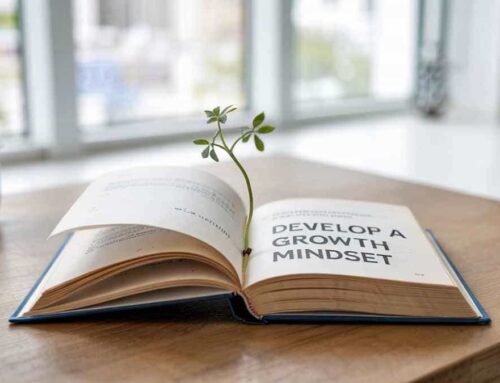
What is the Flowtime Technique
The Flowtime Technique is a productivity method blending focused work (“Flow”) with flexible time management. Unlike the Pomodoro Technique’s rigid intervals, Flowtime encourages working until focus naturally wanes, then taking breaks tailored to personal needs.
Users track task duration, breaks and focus quality to identify optimal work rhythms. Developed by Zoe Read-Bivens, it prioritizes self-awareness over schedules, allowing adjustments based on energy levels and task demands.
By avoiding interruptions, it promotes deep work while preventing burnout. Ideal for creative or intensive tasks, Flowtime balances structure and adaptability, helping users align productivity with their natural concentration patterns for sustained efficiency.
Origins of the Flowtime Technique
The Flowtime Technique was created in the 2010s by Zoe Read-Bivens, a productivity blogger and advocate, as a response to the limitations of rigid time-management systems like the Pomodoro Technique.
Frustrated by fixed intervals disrupting her focus, Read-Bivens sought a method that harmonized with natural concentration rhythms. She fused principles of “Flow State” (A concept popularized by psychologist Mihaly Csikszentmihalyi in 1970s, describing deep immersion in tasks) with flexible time tracking.
Instead of preset work/break cycles, Flowtime emphasizes self-awareness: users work until focus wanes, then take breaks tailored to their needs. By documenting session lengths and focus quality, individuals identify personal productivity patterns, balancing structure with adaptability. This approach aimed to reduce burnout while maximizing deep work, appealing to creatives and knowledge workers.
The Science Behind the Flowtime Technique
Understanding the psychological and physiological principles behind the Flowtime Technique can further illustrate its effectiveness.
Psychological Principles
- Flow State: Achieving a flow state, as described by Mihaly Csikszentmihalyi, involves being fully immersed and engaged in an activity. The Flowtime Technique facilitates this by allowing you to work in intervals that match your natural concentration span.
- Cognitive Load Theory: This theory suggests that our working memory has limited capacity. By breaking work into manageable intervals, the Flowtime Technique helps prevent cognitive overload and enhances focus.
Physiological Principles
- Ultradian Rhythms: Our bodies operate on ultradian rhythms, which are natural cycles of energy and alertness that occur throughout the day. The Flowtime Technique aligns with these rhythms by encouraging breaks and rest periods.
- Attention Restoration Theory: This theory posits that mental fatigue can be alleviated by taking breaks and engaging in restorative activities. The Flowtime Technique incorporates this principle by emphasizing the importance of breaks.
How the Flowtime Technique Works
The Flowtime Technique involves working in focused intervals, but unlike rigid time blocks, it allows you to work for as long as you can maintain focus and productivity. Here’s how it works.
- Choose a Task: Select a specific task or project to work on.
- Set a Timer: Start a timer to track how long you work without distractions. You can use a simple timer or a time-tracking app.
- Work Until Break Needed: Continue working until you feel the need for a break. This could be due to mental fatigue, distraction or completion of a task segment.
- Record the Time: Note the duration of your focused work session.
- Take a Break: Take a break to rest and recharge. The length of the break can vary depending on how long you worked and your personal needs.
- Repeat: After your break, start another work session and repeat the process.
By recording the duration of each work session and adjusting break times accordingly, you can tailor your work patterns to optimize productivity and maintain a state of flow.
Benefits of the Flowtime Technique
The Flowtime Technique offers several benefits that can significantly enhance your productivity and overall well-being.
Increased Focus
By working in intervals that align with your natural concentration span, you can maintain higher levels of focus and reduce the likelihood of distractions. This helps you stay on task and complete work more efficiently.
Flexibility
The Flowtime Technique is adaptable to individual needs and preferences. Unlike rigid time management methods, it allows you to adjust your work and break intervals based on how you feel and the nature of the tasks.
Reduced Burnout
Taking breaks when you need them prevents mental fatigue and burnout. This ensures that you can sustain high levels of productivity over longer periods without compromising your well-being.
Enhanced Creativity
Achieving a state of flow can enhance creativity and problem-solving abilities. When you are fully immersed in a task, your mind is more open to new ideas and innovative solutions.
Better Work-Life Balance
By optimizing your work patterns and reducing wasted time, you can accomplish more in less time. This leaves you with more free time for personal activities, hobbies and relaxation, contributing to a healthier work-life balance.
Implementing the Flowtime Technique
Implementing the Flowtime Technique requires a few simple steps and adjustments to your work habits. Here’s a detailed guide on how to get started.
Step 1: Set Up Your Work Environment
Create a workspace that minimizes distractions and promotes focus. This includes:
- Decluttering: Keep your workspace clean and organized.
- Ergonomics: Ensure your chair, desk and computer setup are comfortable and ergonomically sound.
- Tools: Have all necessary tools and materials readily available to avoid interruptions.
Step 2: Choose the Right Tools
To track your work sessions and breaks, you can use various tools, such as:
- Timers: Simple timers or stopwatches can be used to track your work intervals.
- Apps: Time-tracking apps like Toggl, Clockify or Focus Booster offer features specifically designed for productivity tracking.
- Notebooks: A notebook or journal can be used to record the duration of your work sessions and breaks.
Step 3: Plan Your Tasks
Before starting your work sessions, plan your tasks for the day. Break down larger projects into smaller, manageable segments. Prioritize tasks based on their importance and deadlines.
Step 4: Start Working
Choose a task and start your timer. Work with full focus and effort until you feel the need for a break. Try to avoid any distractions during this period, such as checking emails or social media.
Step 5: Record Your Time
When you decide to take a break, stop your timer and record the duration of your work session. Note any observations about your focus and productivity during this period.
Step 6: Take Breaks
Take a break to rest and recharge. The length of your break can vary, but aim for a duration that allows you to return to work feeling refreshed. Common break lengths range from 5 to 15 minutes.
Step 7: Reflect and Adjust
At the end of each day or week, review your recorded work sessions and reflect on your productivity patterns. Adjust your work and break intervals as needed to optimize your focus and efficiency.
Step 8: Celebrate Your Successes
Acknowledge and celebrate your achievements, no matter how small. Recognizing your progress can boost motivation and reinforce positive habits.
Step 9: Keep Learning and Adapting
Stay open to learning new strategies and techniques that can enhance your productivity. As you become more familiar with the Flowtime Technique, continue to refine your approach and adapt to changing circumstances.
Step 10: Share Your Experience
Sharing your experience with the Flowtime Technique can help you stay accountable and inspire others. Discussing your journey with friends, family or colleagues can provide valuable insights and support.
Real-Life Applications of the Flowtime Technique
The Flowtime Technique is versatile and can be applied to various aspects of life beyond work and study. Here are some additional areas where you can use this method to improve productivity and focus.
Household Chores
Apply the Flowtime Technique to manage household chores more effectively. Set timers for tasks like cleaning, organizing or cooking and take breaks to avoid burnout.
Hobbies and Personal Projects
Whether you’re pursuing a hobby or working on a personal project, the Flowtime Technique can help you stay focused and make steady progress. Use it to carve out dedicated time for activities that bring you joy and fulfillment.
Exercise and Wellness
Incorporate the Flowtime Technique into your exercise routine. For example, set intervals for different types of workouts and take breaks to rest and recover. This can help you stay consistent and motivated in maintaining a healthy lifestyle.
Social Media and Digital Detox
Use the Flowtime Technique to manage your time on social media and other digital platforms. Set specific intervals for online activities and take breaks to engage in offline activities, promoting a healthier digital balance.
Professional Development
Apply the Flowtime Technique to your professional development efforts, such as learning new skills, attending webinars or reading industry-related articles. Structured intervals can help you absorb information more effectively and stay committed to continuous learning.
Conclusion: Embrace the Flowtime Technique for a Balanced, Productive Life
The Flowtime Technique offers a flexible, personalized approach to managing time and boosting productivity. By working in focused intervals and taking regular breaks, you can achieve a state of flow, reduce burnout and enhance your overall well-being. This method is adaptable to various aspects of life, from work and study to personal projects and wellness.
As you begin your journey with the Flowtime Technique, remember to stay patient and open to experimentation. Finding the right balance of work and rest intervals may take time, but the rewards of increased focus, creativity and productivity are well worth the effort. Embrace the Flowtime Technique and discover a more balanced, fulfilling approach to achieving your goals and living a productive life.
By adopting the Flowtime Technique, you can transform the way you work and live, creating a harmonious blend of productivity and relaxation. Whether you’re tackling professional tasks, personal projects or simply looking to enhance your daily routine, this technique offers a powerful tool for achieving your best self. Start today and experience the profound benefits of working with the flow.














